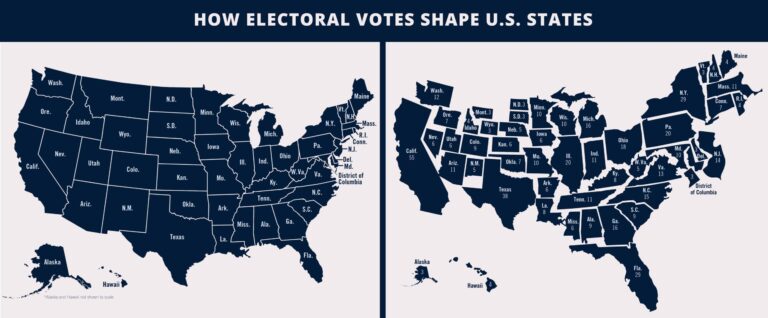Crime and Its Influence on Electoral Dynamics in Battleground States
Shifting Crime Patterns and Their Effect on Voter Priorities
As the election season intensifies, concerns about crime have surged to the forefront of political conversations, especially in swing states where electoral outcomes are often decided. Recent data from states such as Pennsylvania, Michigan, and Arizona reveal a nuanced picture: while property crimes have seen modest increases in some areas, violent crime rates have either plateaued or slightly declined. Despite these mixed statistics, public anxiety about crime remains elevated, fueled by media coverage and localized incidents that capture public attention.
Research shows that crime consistently ranks among the top voter concerns in these battleground regions, frequently surpassing issues like healthcare and the economy in importance during polls and focus groups. This disconnect between actual crime figures and public perception can be attributed to several factors:
- Intense media spotlight on sensational crime stories
- Localized crime surges in metropolitan areas that dominate news cycles
- Strategic political narratives emphasizing crime as a pivotal campaign theme
Below is a snapshot comparing crime trends and voter concern rankings in select battleground states:
| State | Violent Crime Trend | Property Crime Trend | Crime Concern Rank Among Voters |
|---|---|---|---|
| Pennsylvania | Stable | Moderate Increase | 2 |
| Michigan | Slight Decline | Moderate Increase | 3 |
| Wisconsin | Stable | Stable | 4 |
| Arizona | Moderate Increase | Moderate Decrease | 1 |
Community Impact and Political Responses to Crime Trends
Elevated crime rates have significantly affected the social cohesion and political climate within battleground states. Neighborhoods experiencing upticks in both violent and property crimes often report increased fear and diminished confidence in local authorities. This environment drives residents to call for stronger law enforcement presence, enhanced community policing efforts, and comprehensive criminal justice reforms aimed at both prevention and accountability.
Political candidates tailor their platforms to resonate with these concerns, frequently advocating for:
- Augmented budgets for police departments and crime deterrence initiatives
- Expanded community outreach and social support services
- Balanced justice reforms that emphasize rehabilitation alongside enforcement
Examining recent year-over-year crime increases alongside political debate focal points in key states highlights the diversity of approaches:
| State | Yearly Crime Increase (%) | Primary Political Focus |
|---|---|---|
| Ohio | 8.4 | Debate over police funding versus community programs |
| Michigan | 12.1 | Emphasis on criminal justice reform |
| Pennsylvania | 5.7 | Strategies addressing violent crime |
Innovative Policy Initiatives Tackling Crime in Swing States
Lawmakers and community leaders in battleground states are actively exploring multifaceted strategies to mitigate crime and restore public confidence. Prominent among these are community policing expansions aimed at fostering stronger relationships between officers and residents, alongside increased funding for mental health resources to address underlying factors contributing to criminal behavior. Additionally, the integration of advanced technologies—such as AI-driven surveillance and predictive analytics—is gaining traction to enhance law enforcement responsiveness and crime prevention.
Other key policy proposals include:
- Investment in youth development and vocational training programs to reduce pathways to crime
- Sentencing reforms prioritizing rehabilitation over incarceration for non-violent offenders
- Enhanced collaboration between federal and state agencies to dismantle organized crime networks and combat drug trafficking
| Policy Initiative | Intended Outcome | States Prioritizing |
|---|---|---|
| Community Policing Expansion | Strengthen public trust and reduce crime | Pennsylvania, Wisconsin |
| Mental Health Service Enhancement | Address root causes of violence | Michigan, Arizona |
| Youth Engagement and Job Training | Prevent crime through opportunity creation | Florida, North Carolina |
Strategies to Bolster Public Safety and Foster Community Confidence
Meaningful reform hinges on transparent and accountable policing that nurtures open dialogue between law enforcement and the communities they serve. Implementing body-worn cameras, establishing independent civilian oversight boards, and hosting regular town hall meetings empower residents to actively participate in shaping safety policies. These measures humanize officers and build mutual respect, while specialized training in de-escalation and conflict resolution reduces the risk of violent confrontations.
Addressing the social determinants of crime is equally vital for sustainable safety improvements. Expanding access to mental health care, youth mentorship programs, and economic development initiatives tackles the root causes that often lead to criminal activity. The following table highlights critical investment areas linked to enhanced community trust and crime reduction:
| Investment Focus | Expected Impact |
|---|---|
| Mental Health Services | Reduces crisis-driven incidents and supports recovery |
| Youth Engagement Programs | Decreases juvenile delinquency and fosters positive development |
| Job Creation Initiatives | Enhances economic stability and reduces crime incentives |
| Community Policing | Builds trust and cooperation between police and residents |
Conclusion: Crime’s Pivotal Role in Shaping Electoral Outcomes
As the nation approaches a critical election cycle, crime remains a defining and often divisive topic, particularly in battleground states where voter sentiment can sway results. Understanding the interplay between crime statistics, public perception, and policy responses offers valuable insight into the evolving political landscape. With voters increasingly scrutinizing candidates’ approaches to law enforcement and justice reform, the trajectory of crime trends in these key states will continue to influence campaign strategies and ultimately, electoral decisions.








